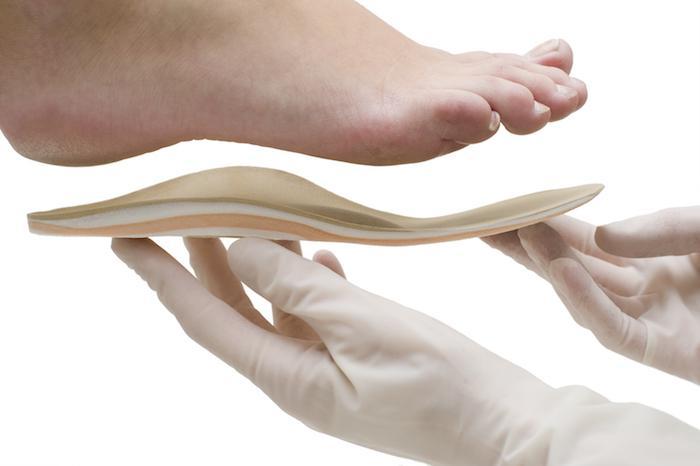4 Ways to Manage Plantar Fasciitis

Plantar fasciitis is an excruciatingly painful foot condition. Uncontrolled plantar fasciitis can cause you to have heel pain severe enough that it makes it difficult to comfortably go about your daily routine.
If your plantar fasciitis is severe enough to regularly cause you pain and diminish your quality of life, board-qualified podiatrist Ryan Golub, DPM from Phoenix, Arizona’s Arizona Foot Health has solutions that will get you back on your feet, pain-free. Here are four noninvasive ways you can manage your plantar fasciitis and stop suffering from terrible heel pain.
About plantar fasciitis
Your plantar fascia, a tissue band that runs across your foot to your heel from your toes, is responsible for carrying the weight of your whole body when you stand or move. You get plantar fasciitis when you develop inflammation in this tissue band.
Plantar fasciitis isn’t dangerous, but it can be painful and make it difficult to stand. Symptoms of plantar fasciitis include:
- Stabbing pain in your heel or lower half of the foot
- The pain is at its worst when you first step out of bed after sleeping
- Pain is relieved by walking or moving, but it gets worse when standing or after exercise.
Four ways to manage plantar fasciitis
With the right treatment protocol, you can manage plantar fasciitis and live without pain. Depending on the severity of your condition and your needs, these are four treatments Dr. Golub commonly recommends.
1. A stretching routine and night splints
If your plantar fasciitis symptoms are mild, a targeted stretching routine and night splints might be all you need to relieve your symptoms. Targeted stretches gently stretch your plantar fascia, which loosens it and relieves the pain, while wearing special splints at night keeps your plantar fascia from tightening while you sleep and makes it less painful to walk first thing in the morning.
Stretches for plantar fasciitis are most useful when your plantar fascia is at its stiffest, which is usually first thing in the morning or after long stretches of sitting or standing still. Dr. Golub shows you how to perform an individualized stretching routine.
2. Custom orthotics
Dr. Golub can fit you with custom orthotics, which are inserts that you place into your shoes, to relieve symptoms of plantar fasciitis while you’re on your feet. Your orthotics help you have increased mobility with less pain.
3. Amniotic growth factor injections
To treat the root cause of plantar fasciitis and end your symptoms for good, Dr. Golub recommends amniotic growth factor injections. Amniotic growth factor injections work by encouraging your feet to grow and regenerative new, healthy plantar fascia tissues.
Dr. Golub uses donated amniotic tissues for this simple procedure, injecting them where you feel pain in your foot. This provides long-lasting relief to plantar fasciitis and helps to prevent the issue from developing again.
4. Pulse wave therapy
The exciting FDA-cleared pulse wave therapy uses advanced technology to accelerate your healing from plantar fasciitis. Like amniotic growth factor injections, pulse wave therapy is a noninvasive treatement that increases blood flow and stimulates healing and regrowth of your plantar fascia tissues.
Pulse wave therapy treatments only take about five minutes, with treatment typically taking place weekly for up to five weeks. Treatment isn’t painful, and you can expect to see immediate or gradual improvements after each session.
If you suffer from pain from plantar fasciitis, our team at Arizona Foot Health is here to help. Schedule your consultation today online or over the phone.
You Might Also Enjoy...
The Achilles Heel
Given Arizona’s climate, patients are able to remain active year round. It’s why we all chose to live here. But…
Alleviating Back Pain and Other Benefits of Custom Orthotics You Didn’t Know About
Would you ever imagine that custom foot orthotics could improve your quality of life? That’s what many people say after…
9 Helpful Tips to Prepare Your Home Before Bunion Surgery
When moderate interventions, such as wearing wider shoes or using pads in your shoes, fail to ease your bunion pain…
When Should You Go to the Doctor for an Ingrown Toenail?
In most cases, you can nurse an ingrown toenail at home with over-the-counter pain medication, topical antibiotic creams, and soaking…
6 Home Exercises to Keep Your Ankles Strong
Ankles that feel wobbly and weak are vulnerable to injury. If you play sports, run, jump, or just walk often,…
Is Surgery My Best Option For Treating Bunions?
You have a bunion and it isn’t pretty, but if your bunion is small enough, or doesn’t hurt, you may…






